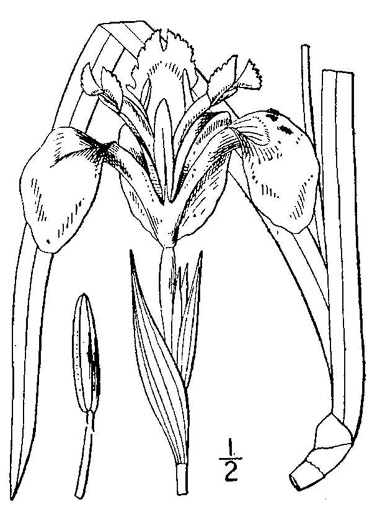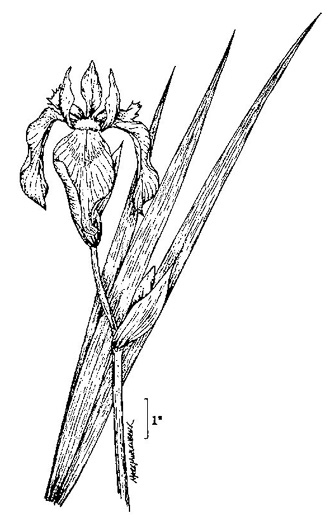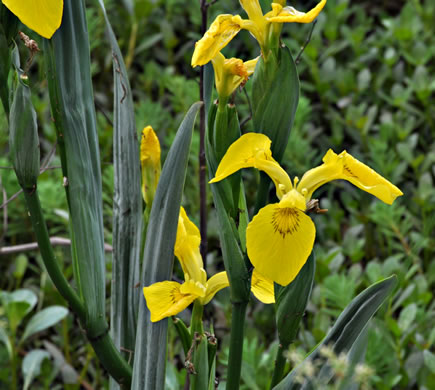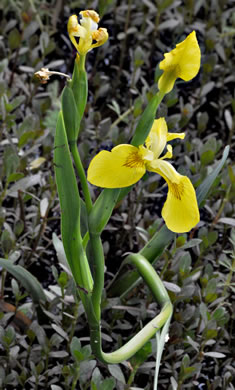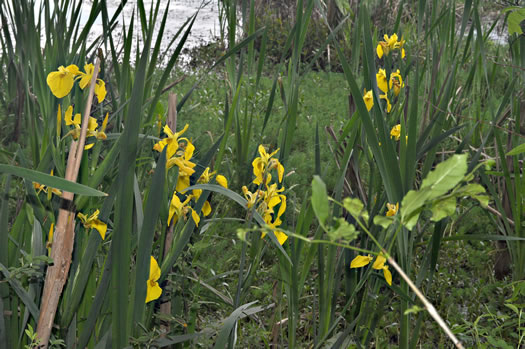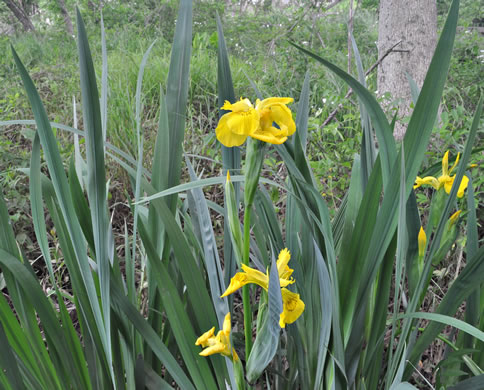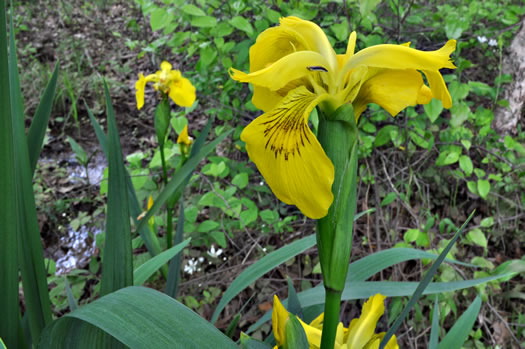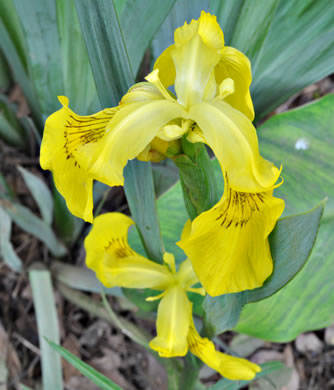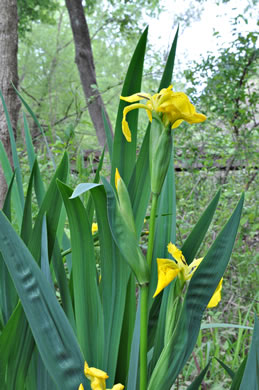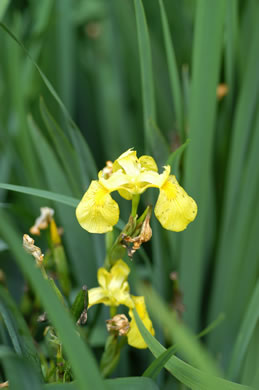Spermatophytes (seed plants): Angiosperms (flowering plants): Monocots: Asparagales
WEAKLEY'S FLORA OF THE SOUTHEASTERN US (4/24/22):
Iris pseudacorus
FAMILY
Iridaceae
Go to FSUS key
Dig deeper at SERNEC, a consortium of southeastern herbaria.
Check out EDDMapS.org to see where this has been reported.
Learn more about Yellow Flag from the Vascular Plants of North Carolina.
SYNONYMOUS WITH
PLANTS NATIONAL DATABASE:
Iris pseudacorus
FAMILY
Iridaceae
SYNONYMOUS WITH Flora of North America north of Mexico, vol. 26 (2002)
Iris pseudacorus
SYNONYMOUS WITH VASCULAR FLORA OF THE CAROLINAS (Radford, Ahles, & Bell, 1968) 046-05-005:
Iris pseudacorus FAMILY Iridaceae
SYNONYMOUS WITH Manual of the Southeastern Flora (Small, 1933, 1938)
Iris pseudacorus
COMMON NAME:
Yellow Flag, Water Flag, Yellow Iris
To see larger pictures, click or hover over the thumbnails.
Rob Hunnings rlh_10411C
May Greenville County SC
Lake Conestee Nature Park
The only completely yellow, large, wild iris in North america, per Invasive Plants, Guide to Identification, Impacts and Control (Kaufman & Kaufman, 2007).
Rob Hunnings rlh_10532C
May Greenville County SC
Lake Conestee Nature Park
Once established, can form dense clumps that exclude other wetland species, per Invasive Plants, Guide to Identification, Impacts and Control (Kaufman & Kaufman, 2007).
Rob Hunnings rlh_10537
May Greenville County SC
Lake Conestee Nature Park
The 3 drooping, deep yellow sepals are marked with purple-brown, per Invasive Plants, Guide to Identification, Impacts and Control (Kaufman & Kaufman, 2007).
Rob Hunnings rlh_10544
May Greenville County SC
Lake Conestee Nature Park
The 3 narrow petal-like sections are flattened branches of the style, per The Monthly Illustrator, Vol 4 (Jones, 1895).
Rob Hunnings rlh_10547
May Greenville County SC
Lake Conestee Nature Park
Sword-like flattened leaves (3/4" wide to 3' long) arise in a fan from base, per Invasive Plants, Guide to Identification, Impacts and Control (Kaufman & Kaufman, 2007).
Patrick D. McMillan pdmipseudacorus_lvl
June Avery County NC
3 short erect petals, and 3 sepals with broad rounded down-curved tips, per Wildflowers of Tennessee, the Ohio Valley, and the Southern Appalachians (Horn, Cathcart, Hemmerly, & Duhl, 2005).
WEAKLEY'S FLORA OF THE SOUTHEASTERN US (4/24/22):
Iris pseudacorus
FAMILY
Iridaceae
SYNONYMOUS WITH
PLANTS NATIONAL DATABASE:
Iris pseudacorus
FAMILY
Iridaceae
SYNONYMOUS WITH
Flora of North America north of Mexico, vol. 26
Iris pseudacorus
SYNONYMOUS WITH
VASCULAR FLORA OF THE CAROLINAS (Radford, Ahles, & Bell, 1968) 046-05-005:
Iris pseudacorus
FAMILY
Iridaceae
SYNONYMOUS WITH
Manual of the Southeastern Flora (Small, 1933, 1938)
Iris pseudacorus
If a search such as "Carex leptalea var. leptalea" doesn't deliver the results you want, try "Carex leptalea".
Or, to minimize chances of a misspelling, try just "Carex le".
Less is more: If "pencil flower" doesn't deliver the results you want, try "pencil".

